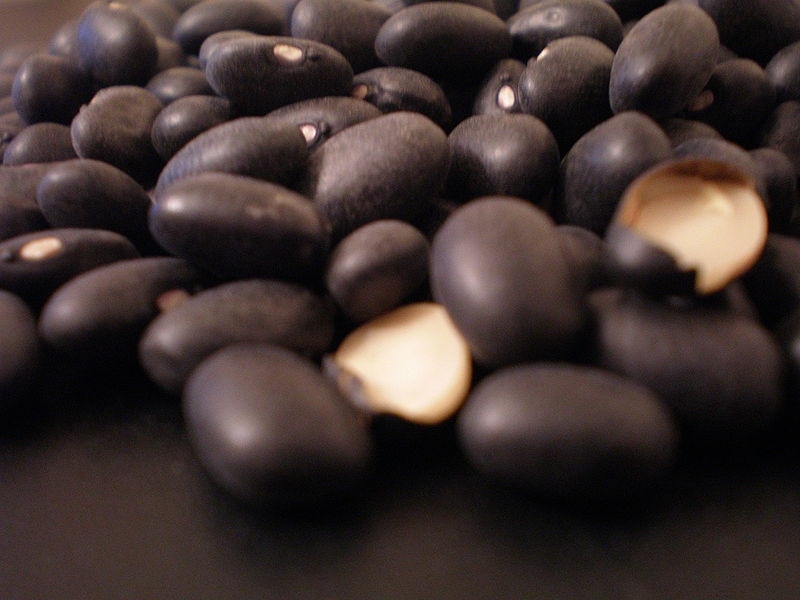

Population growth presents challenges, such as how to feed all the planet's inhabitants on a sustainable basis (photo: Wikimedia Commons)
Population growth presents challenges, such as how to feed all the planet's inhabitants on a sustainable basis.
Population growth presents challenges, such as how to feed all the planet's inhabitants on a sustainable basis.

Population growth presents challenges, such as how to feed all the planet's inhabitants on a sustainable basis (photo: Wikimedia Commons)
By Elton Alisson, in Porto Seguro (Bahia) | Agência FAPESP – The world population will grow from some 7 billion today to approximately 9 billion by 2050. Among the global challenges posed by this prospect is how to ensure food security on a sustainable basis for all the planet’s inhabitants.
Most of the solutions to this and other global problems could come from chemistry, according to Adriano Defini Andricopulo, a professor at the University of São Paulo’s São Carlos Physics Institute (IFSC-USP). Andricopulo was a speaker at the 68th Annual Meeting of the Brazilian Society for the Advancement of Science (SBPC).
Focusing on “Sustainability, technology and social integration,” the meeting took place on July 3-9 at the Porto Seguro campus of the Federal University of Southern Bahia (UFSB).
“Chemistry will undoubtedly make the greatest contribution to solving global challenges in the twenty-first century,” said Andricopulo, who is a member of the executive committee of the Center for Research and Innovation in Biodiversity and Drug Discovery (CIBFar) and its head of technology transfer. CIBFar is one of the Research, Innovation and Dissemination Centers (RIDCs) supported by FAPESP.
According to data presented by Andricopulo, one hectare of land could feed two people in 1960, but by 2050, the same amount of land will have to feed more than six people.
The challenge is made even more daunting, according to him, by the impossibility of feeding today’s world population of 7 billion. “New products will have to be developed to protect crops against pests and diseases, and in this context, chemical synthesis will play a key role,” he said.
Some 40% of the food currently produced worldwide would not exist if there were no agrochemicals to protect crops from phytopathogens, the organisms that cause plant diseases, Andricopulo added.
In the search for new active principles for pesticides and herbicides designed to control weeds, pests and fungal diseases – given that pathogens can develop resistance to existing agrochemicals over time – chemists are increasingly inspired by natural compounds.
According to Andricopulo, many plants produce complex blends of chemical substances that affect the behavior of insects, influencing where they feed or procreate. “This information can be used to develop practical methods of pest control,” he said.
More knowledge of plant nutrition could result in plant breeding advancements to make the absorption of vital nutrients such as nitrogen more efficient. Nitrogen is an essential element for the development of plants, which use it in several metabolic processes. It is abundant in the atmosphere but has no biological utility as such: plants must convert it into compounds that they can use, such as nitrate.
Plants cannot absorb nitrogen directly from the air. Uptake is possible in the form of water-soluble ammonia or nitrate produced by soil bacteria.
Plants have traditionally been supplied with these compounds via fertilizer. Ammonium nitrate is one example. However, indiscriminate use of fertilizer can degrade soil quality, pollute water sources and the atmosphere, and build up resistance in pests.
“Chemistry can contribute by producing cheaper catalysts that enable plants to fix nitrogen more efficiently, for example,” Andricopulo said.
Phosphorus is another essential element for plants. Within a few years, up to 80% of it will be available in forms that cannot be absorbed and used by crops.
Fertilizer is again a common source of phosphorus, in this case as phosphate extracted from sedimentary rock deposits and chemically treated to increase its concentration and make it more soluble so that plants can absorb it.
The problem is that the world’s phosphate deposits are likely to run out in the next 50-100 years. “Chemistry can play an important role in the development of new technology to recover phosphorus from waste for potential reuse,” Andricopulo said.
World Chemistry Congress
Andricopulo pointed out that next year, Brazil will be the first South American country to host the World Chemistry Congress, held every two years by the International Union of Pure & Applied Chemistry (IUPAC).
IUPAC is a global scientific institution set up in 1919 by chemists from industry and academia who recognized the need for international standardization in chemistry. It defines its mission as strengthening chemistry worldwide; promoting excellence and relevance in academic and industrial research and fostering the standardization of weights, measures, names and symbols to ensure the continued success of the scientific enterprise and the growth of international trade.
To date, the biennial congress has been held only in Europe, Asia, Oceania and North America. “The hosting of IUPAC’s world congress by Brazil will be chemistry’s most significant event of all time in South America,” Andricopulo said.
The 2017 congress is scheduled to take place at São Paulo’s World Trade Center on July 9-14.
For more information and to register, visit www.iupac2017.org.
Republish
The Agency FAPESP licenses news via Creative Commons (CC-BY-NC-ND) so that they can be republished free of charge and in a simple way by other digital or printed vehicles. Agência FAPESP must be credited as the source of the content being republished and the name of the reporter (if any) must be attributed. Using the HMTL button below allows compliance with these rules, detailed in Digital Republishing Policy FAPESP.





